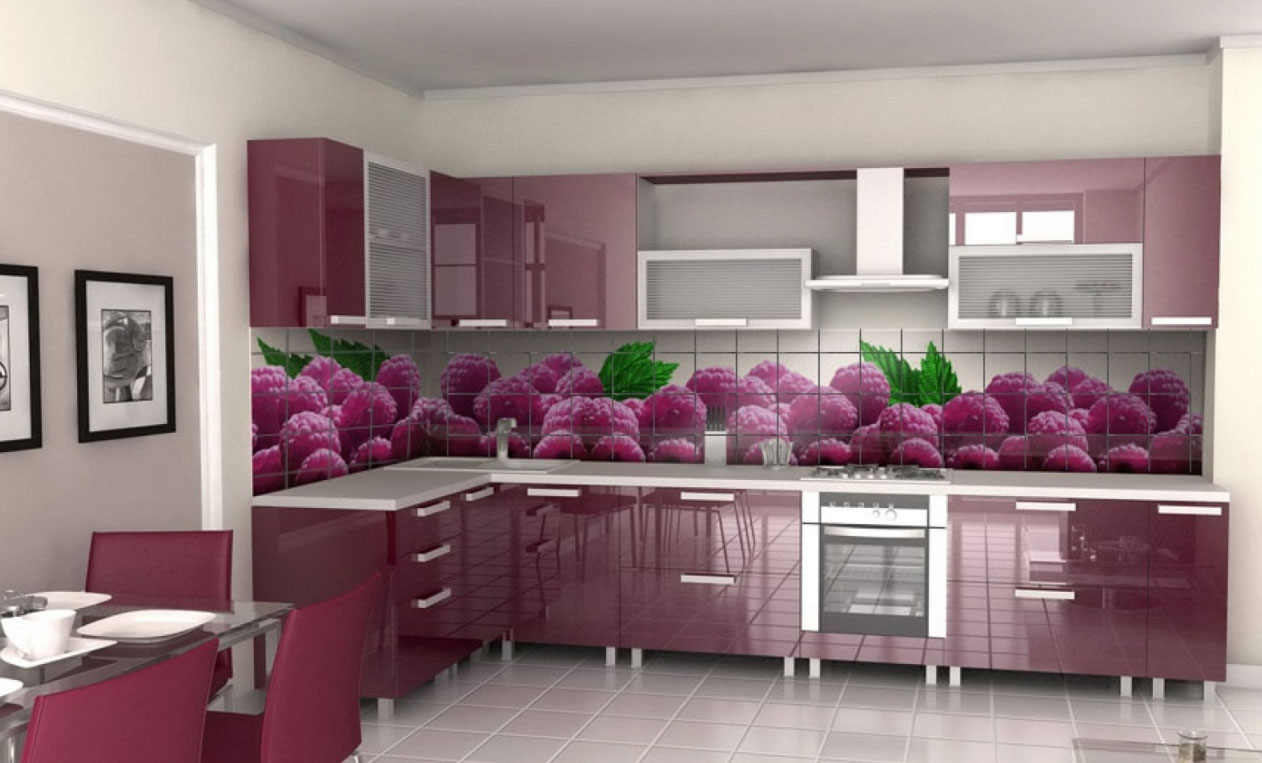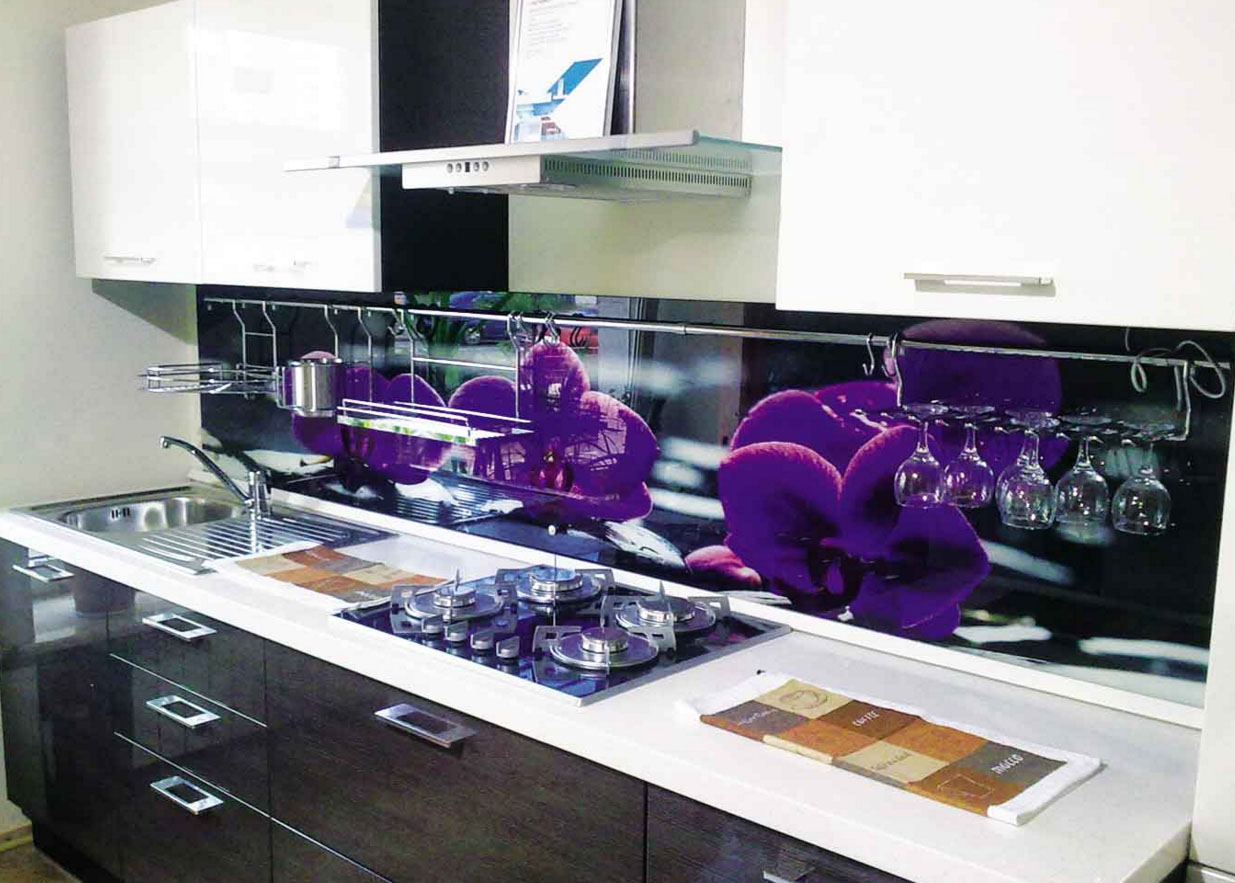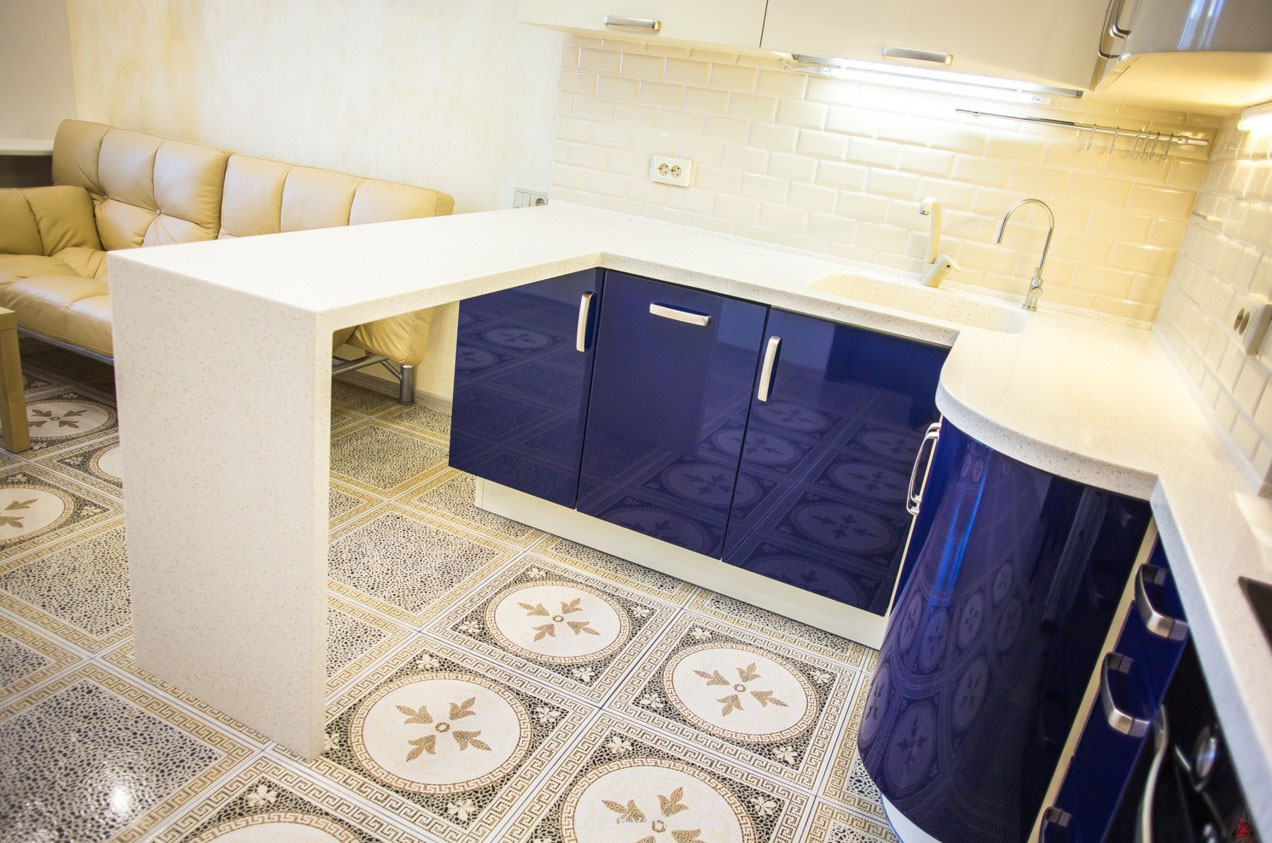Decorate the kitchen with the help of photo tiles: Choose image to their liking
The search for new options for the design of the kitchen or bathroom led to the creation of such a product, as the photo tiles.

product Features
Photo tiles to the apron in the kitchen or bathroom decor is a new product, which is in the development of the market. These products allow for an individual design, It gives the opportunity for creativity and realization of your own pans.
What good photo tiles
The advantages of the product include:
- individual approach.
- The ability to print different images (including, personal photos).
- The reliability and durability of image.
- Brightness and durability pictures, deposited in a special way.
- The picture does not fade, It is not erased and is not afraid of water.
Methods of applying the image
Most recently, the production of photo tiles were associated with significant financial and time costs. cost of 1 quarter. m tile with a picture reached 12 thousand. rubles. This was due to the complexity of the technological process called decal, requiring high temperature tiles precalciner. Taking into account the nuance production process takes about 2 day.
The situation changed dramatically with the advent of UV printer. This modern device involves the transfer of images onto the flat surface. At the same time transferred all the nuances and subtleties of the image. The coating process is performed on images using the eco-solvent ink. Direct application of the image to make it possible to print on the tile for the kitchen accessible and less expensive.

stages:
- selected ceramic tile bright colors;
- each piece of tile is treated by gun prekoat varnish;
- Tile dries within a few minutes;
- picture is applied to the surface in the same way, for paper;
- for fixing an image tiles is heated to a temperature 150 degrees (To do this, use the special drying or conventional oven) and kept hot 10 minutes.
Also popular technology transfer pictures on the tiles by sublimation.
Important: paint on ceramic tiles torn off only if regular treatments abrasives or mechanical damage by sharp objects.
kitchen apron
In the kitchen, a lot of surfaces, which can be coated printing. These include kitchen apron (of wall space between the mounted and floor cupboards), wall panels, countertops. Photo tiles for the kitchen apron is considered a modern and original design course.
Quite in demand in the interior of the kitchen tile hog. The product is a rectangular ceramic tiles of small format (12-30 cm in length) and 6-10 cm width. Outwardly, this masonry reminiscent of a brick wall, so widely used in interior solutions. Photo tiles for kitchen hog often has a chamfered end edge - bevel, that allows you to make taxation tile surface texture and volume. This type of ceramics partly or completely sealed in the selected designer catalog image. The result is a custom design kitchen wall.
Council: If the kitchen is small, recommend choosing the panoramic image, visually expanding space or disposed horizontally abstractions.

tabletop
Photo tiles for kitchen apron on in harmony with top perepletetsya, made in the same style.
Tiles used for tabletops of different configurations. Dekolirovannaya ceramics coated with a picture must be the same on the stylistic direction to the rest of the kitchen space decor. If the kitchen is decorated with tiles depicting fruit or coffee, the same elements it is desirable to repeat on a hot plate for countertops.
Walls and columns
The houses and apartments often have niches and ledges, behind which are hidden communication. Not to look bored, surface is used for applying photo tiles. Thus selected subjects, close to the nature of the premises is issued. To fit the image of the room boy with robots or cars, and the girl's bedroom is decorated with flowers and fairy-tale characters.
In the interior of the living room photo panel on the wall emphasizes the status of the owner and gives individual charm.
floors
Fashion for decorating surfaces pictures reached and decorating floor covering. looks particularly spectacular ceramic tile with a picture in 3D style. Choosing a picture of sea sand with shells, pebble or grass with flowers, the room takes on a new and fresh look.

installation
Photo tiles are placed in the same, as well as ordinary ceramic. We can not forget about the gap between products, equal 1 mm. Lushe just glue a photo panel, causing the adhesive to the back of the product and gently pressing to clean the wall.
The main condition of photo tiles installation - lack of exposure to solvents and corrosive chemicals. It is not recommended to rub the surface with sharp or abrasive materials.
Self-production of photo tiles
If the price of an individual order for the photo tiles can not afford, you can make the product yourself.
Photo tiles with their hands is quite a different technology. required for the manufacture of:
- white ceramic tile;
- special transparent film for laser printer, showing the properties of a heat press;
- termopress.
Such a film bought on foreign websites. The cost of about 1300-1500 rubles 1 m. quarter. In preparing not do without the knowledge of graphic editors, processing the selected image. With their help stretch the overall image size selected, then divide it into tile size. Picture necessary to print on a special film in mirror image!
Heat press can be rented in the advertising companies, are engaged in printing on fabric. The tiles are placed in a thermal press, lay-down film with a pattern and at a temperature 180 degrees stand 2 minutes. Manipulation is repeated with as many tiles, on which divided panels.
In the process of cooling the tiles to be carefully removed from the paper substrate (the back portion of the film). Thus get the picture on the tile, Hidden under a protective transparent layer.
Photo tiles with the image of family or friends is converted into an original gift. It's enough to put the product in the required frame size, and then beautifully packaged.
Natural needs of modern people has become the pursuit of a bright personality. Express themselves through the creation of the original interior, made through the use of modern technology products.
